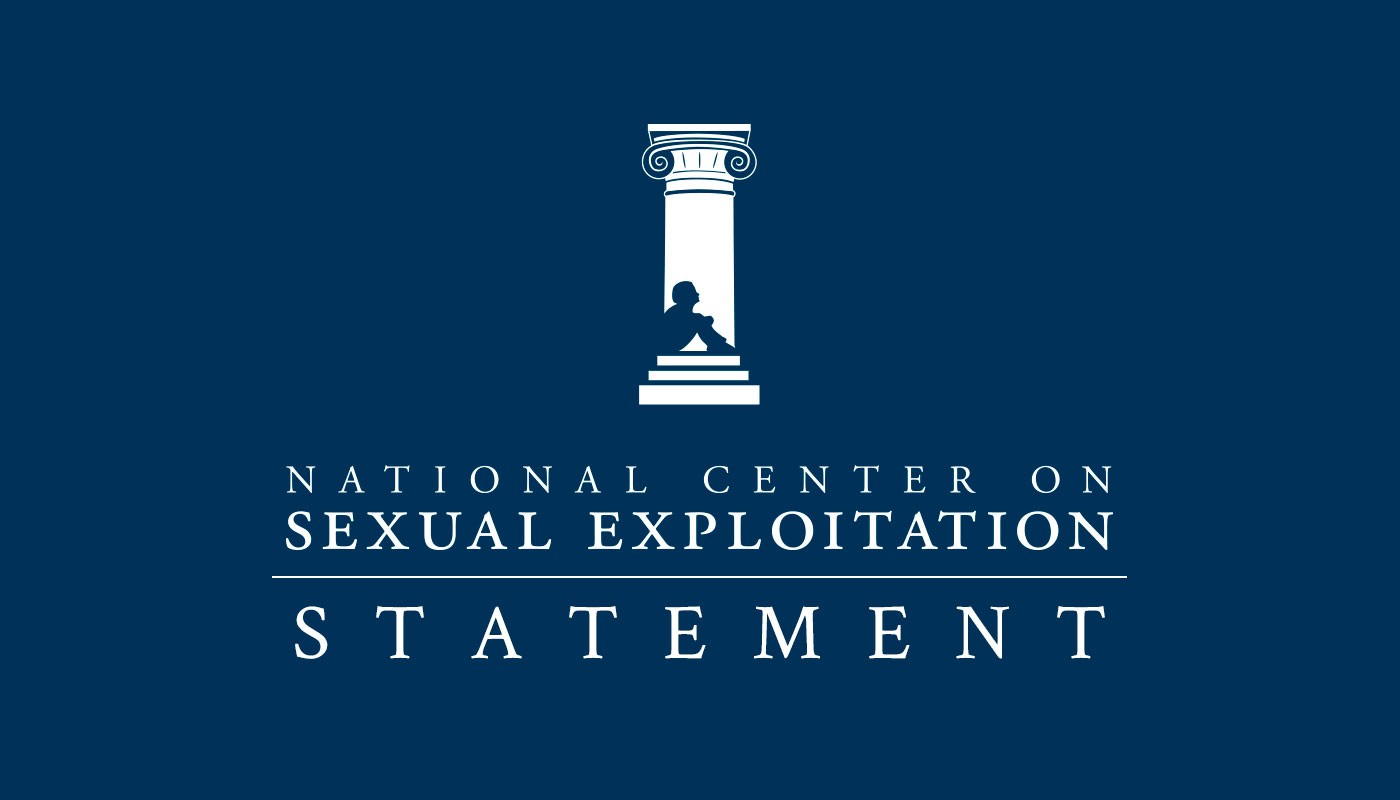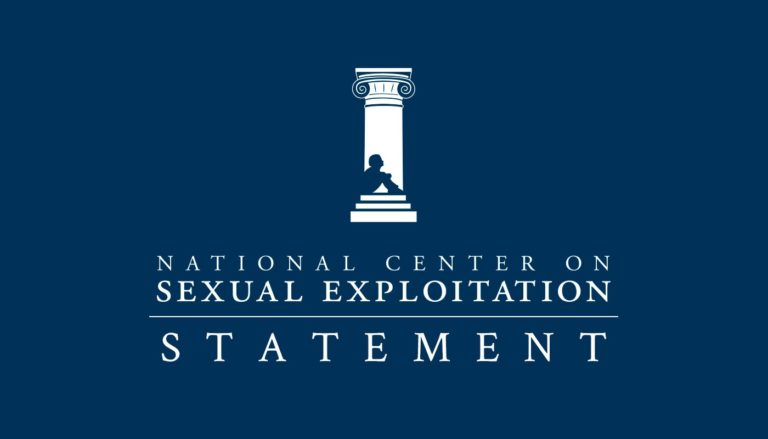NEWS RELEASE from MORALITY IN MEDIA, Inc.
NEW YORK (September 25, 2009) – Morality in Media has compiled information from hundreds of news articles and from court cases, social science studies, books, Congressional testimony, and other sources that show how the explosion of hardcore adult pornography on the Internet and elsewhere is contributing to the sexual exploitation of children. The works cited in the report were published from 1980 to the present.
The evidence compiled shows:
- Perpetrators use adult pornography to groom their victims.
- For many perpetrators there is a progression from viewing adult pornography to viewing child pornography.
- Johns act out what they view in adult pornography with child prostitutes and pimps use adult pornography to instruct child prostitutes.
- Children imitate behavior they view in adult pornography with other children.
- Perpetrators use adult pornography to sexually arouse themselves.
- Addiction to adult pornography destroys marriages, and children raised in one-
parent households are more likely to be sexually exploited.
The 40-page report entitled, “How Adult Pornography Contributes to Sexual Exploitation of Children,” is supplemented by 175 pages of appendices. The report was compiled by MIM President Robert W. Peters.
In the report, Mr. Peters commends government and private entities for finally working together to curb sexual exploitation of children. He then states, “For the most part, however, these same…entities have turned a blind eye towards the explosion of hardcore adult pornography on the Internet and elsewhere…[T]hose who fight sexual exploitation of children but who turn their backs to the adult pornography problem are making a tragic mistake.”
Mr. Peters observes that while hardcore adult pornography does not depict actual children, it does “include hardcore depictions of sex with persons who look like children and with ‘barely legal teens.’ Hardcore adult pornography also encompasses depictions of sex with animals, other family members, multiple partners (‘gangbangs’), and prostitutes. It also depicts excretory activities and sexual violence against women, including rape and torture.” Mr. Peters responds to the notion that online distributors of hardcore adult pornography are not breaking any laws. He writes, “[I]n 1996 Congress amended two sections of the federal obscenity laws…to clarify that distribution of obscene matter is prohibited on the Internet. In Miller v. California…the U.S. Supreme Court has also stated: ‘This much has been categorically settled by the Court, that obscene material is unprotected by the First Amendment.’ The Miller Court went on to define the term ‘obscene’ in a manner intended to restrict the reach of…obscenity laws to ‘hardcore’ pornography. Today, most adult pornography distributed commercially, whether online or elsewhere, is ‘hardcore.’”
In response to the assertion that that the average American no longer deems hardcore adult pornography unacceptable, he states, “Pornography defenders overlook at least three factors. First, much if not most hardcore adult pornography is consumed by a relatively small percentage of individuals who are addicted to it. Second, just because a person experiments with hardcore adult pornography for a period of time or on occasion succumbs to the temptation to view it does not mean he or she approves of what is viewed, especially when hardcore adult pornographers promote their products aggressively…Third, many visitors to ‘adult websites’ are minors.”
He also cites the results of four national opinion polls (conducted by Harris Interactive and Pew Research Center) indicating that most adults do not consider pornography morally acceptable or harmless and that they want federal obscenity laws enforced.
He explains why it is a mistake for the Justice Department and FBI to focus their energies almost exclusively on child molesters and child pornography because of limited resources. “In the first place,” he writes, “the explosion of hardcore adult pornography is contributing to sexual exploitation of children in various ways. In the second place, children are harmed not just by predators; they are also harmed by exposure to hardcore adult pornography…In the third place…a frequent result of a successful federal obscenity prosecution is a significant fine and/or forfeiture of property…[which] can offset in whole or part the cost of these cases. In the fourth place…it isn’t just children who are harmed by hardcore adult pornography.”
Mr. Peters sets forth reasons for why he thinks vigorous enforcement of obscenity laws will result in a number of benefits both to children and society. He also explains why federal obscenity laws are not being enforced vigorously, as they should be. Those at fault include the U.S. Justice Department, the FBI and Congress.
Mr. Peters states that in addition to law enforcement, “parental involvement, public education, the involvement of religious groups, and corporate responsibility are all desperately needed.”
The following sources are cited in the report and appendices: journals, including Aggressive Behavior, American Journal of Psychiatry, Child Abuse & Neglect, Child Maltreatment, CyberPsychology & Behavior, International Journal of Offender Therapy and Comparative Criminology, Journal of the American Psychiatric Nurses Association, Journal of Interpersonal Violence, Journal of Sex & Marital Therapy, Journal of Sexual Aggression, Psychological Record, Sexual Abuse: A Journal of Research and Treatment, and Women and Criminal Justice; books, including “Pornography: Driving the Demand in International Sex Trafficking,” “Sex-Related Homicide and Death Investigation,” and “The Johns: Sex for sale and the men who buy it;” materials published by the American Academy of Matrimonial Lawyers, American Prosecutors Research Institute, COPA Commission, ECPAT, International Association of Police Chiefs, National Center for Missing and Exploited Children, UN Human Rights Council and others; national opinion polls; federal and state court cases; testimony in legislative hearings; U.S. based news publications, including Associated Press, Boston Globe, New York Times, Philadelphia Inquirer, Baltimore Sun, Washington Post, Atlanta Journal-Constitution, Miami Herald, Mobile Register, Dallas Morning News, Chicago Tribune, Indianapolis Star, Detroit Free Press, Cleveland Plain Dealer, Minneapolis Star Tribune, Kansas City Star, Omaha World-Herald, Tulsa World, Denver Post, Salt Lake Tribune, Los Angeles Times, and Seattle Times; and news publications based in several other countries.
The report (with Appendices), “How Adult Pornography Contributes To Sexual Exploitation of Children,” by MIM President Robert Peters, is available in PDF form.
Author: Robert Peters 09/25/2009



